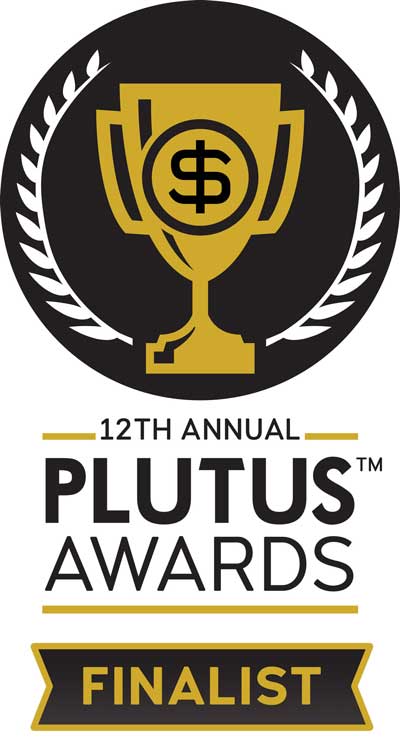If you work for a company that has an official review process, take advantage of it! I wouldn’t dread it as too many people seem to do. Embrace the chance to get some candid feedback, better understand your manager’s priorities and come up with a gameplan for next year.
Preparing for a performance review also gives you an opportunity to advocate for yourself. If you had a breakout year on the job, use the performance review to advance your career. If you didn’t have a strong year, prepare proactively for a negative performance review so you can get back on track. You want to avoid a layoff derailing your FIRE plan!
I have been working for myself since 2007, so I am both employee and manager and need to give the annual performance review to myself. With a company of one, at least I am sure to be the top performer😊 More seriously, a self-performance review helps me figure out what to focus on for next year. I can build on what’s already working, drop or refine what isn’t working and start new activities to reflect any new goals or priorities.
10 questions for your self-performance review
- What was your biggest win for the year?
- What was your favorite project during the year?
- What are you already doing that you’d like to do more of next year?
- What was your least favorite project this year?
- What activity are you going to stop doing or do less of next year?
- What skills or expertise did you hone this year?
- What resources, training, or support do you need for next year?
- What makes you excited and energized about next year?
- What is your biggest priority for next year?
- How can you take better care of yourself for next year?
I use a mix of backward- and forward-looking questions because I don’t just want an inventory of last year. I want a way forward or some direction for what’s to come. I journal almost every day so I capture most of my thoughts in my regular journaling.
I also like to use a giant post-it pad and brainstorm ideas on a wall. Scott and I make our travel wish list and updates to our investments this way. The post-it pad is easier to collaborate on than a journal. If we’re weighing options – say different ideas for investing a sum of money – I’ll use little post-its to write individual ideas and attach it to the big post-it pad. This way, all ideas can be viewed at once. Make three columns: Hell Yes, Hell No and Maybe, and move individual options to the column that fits. This can help narrow things down more quickly.
Bonus question: Are your goals for next year wrestling with the same issues as last year?
The measure of success is not whether you have a tough problem to deal with, but whether it’s the same problem you had last year.
– John Foster Dulles
I made zero movement on my weight loss goal for the year. Even worse, I didn’t make the target actions I set for myself – e.g., number of exercise days, time spent exercising, etc. Clearly I need to do something different because I’m not following up. I need a different goal, different plan or both.
Being in the coaching business myself, I invest in my own development. I spent $6,000 on courses, memberships and other learning products and services in 2020 and around $1,000 this year. One purchase I made this year is for next year – a 300-day program on building better habits. I’ll keep you posted on how that works out!
Start now – I pre-fill my Time Diary

In addition to the year-end performance review, I spent two hours pre-filling for 2022 the Excel spreadsheet that I use as both a Time Diary (the game-changer tool I have raved about before) and a To Do list. The Time Diary is backward looking, so those entries will be input in real-time as I log what I have spent my time on. But the To Do list is forward looking, so I have marching orders in place right on January 1.
Some of the items I pre-fill include various deadlines (e.g., quarterly tax payments, sending figures to our accountant). I make sure to enter these on dates that give me enough time to take action, so for a payment that’s due on Jan. 15, I’ll enter it for Jan. 1 to give me buffer time to actually make the payment. I also pre-fill entries for regular activities, including daily activities like journaling, weekly activities like church and ad hoc tasks like checking credit reports or even changing out the dish sponge. Finally, I take what I learned from my self-performance review and put in any new activities for the new goals I have set (e.g., reviewing lessons from the new course I just committed to).
By pre-filling entries, I can set it and forget it. I know my Excel spreadsheet has already captured many of the activities I need to do next year, so I don’t use any mental bandwidth to remember them. The activity will come to my attention as I’m filling out my Time Diary each day. It helps me avoid double-booking, and more importantly, over-scheduling. I already have 6,832 entries in my spreadsheet (remember, I do put in every activity, so it adds up!). I know that when I add something, I have to check it against what I already have in there.
Looking at what’s coming up has gotten me excited for 2022. What’s on tap for you?


 We are Scott and Caroline, 50-somethings who spent the first 20+ years of our adult lives in New York City, working traditional careers and raising 2 kids. We left full-time work in our mid-40’s for location-independent, part-time consulting projects and real estate investing, in order to create a more flexible and travel-centric lifestyle.
We are Scott and Caroline, 50-somethings who spent the first 20+ years of our adult lives in New York City, working traditional careers and raising 2 kids. We left full-time work in our mid-40’s for location-independent, part-time consulting projects and real estate investing, in order to create a more flexible and travel-centric lifestyle.  Financial independence and early retirement is not something we originally focused on, but over time realized it was possible. Our free report,
Financial independence and early retirement is not something we originally focused on, but over time realized it was possible. Our free report, 







